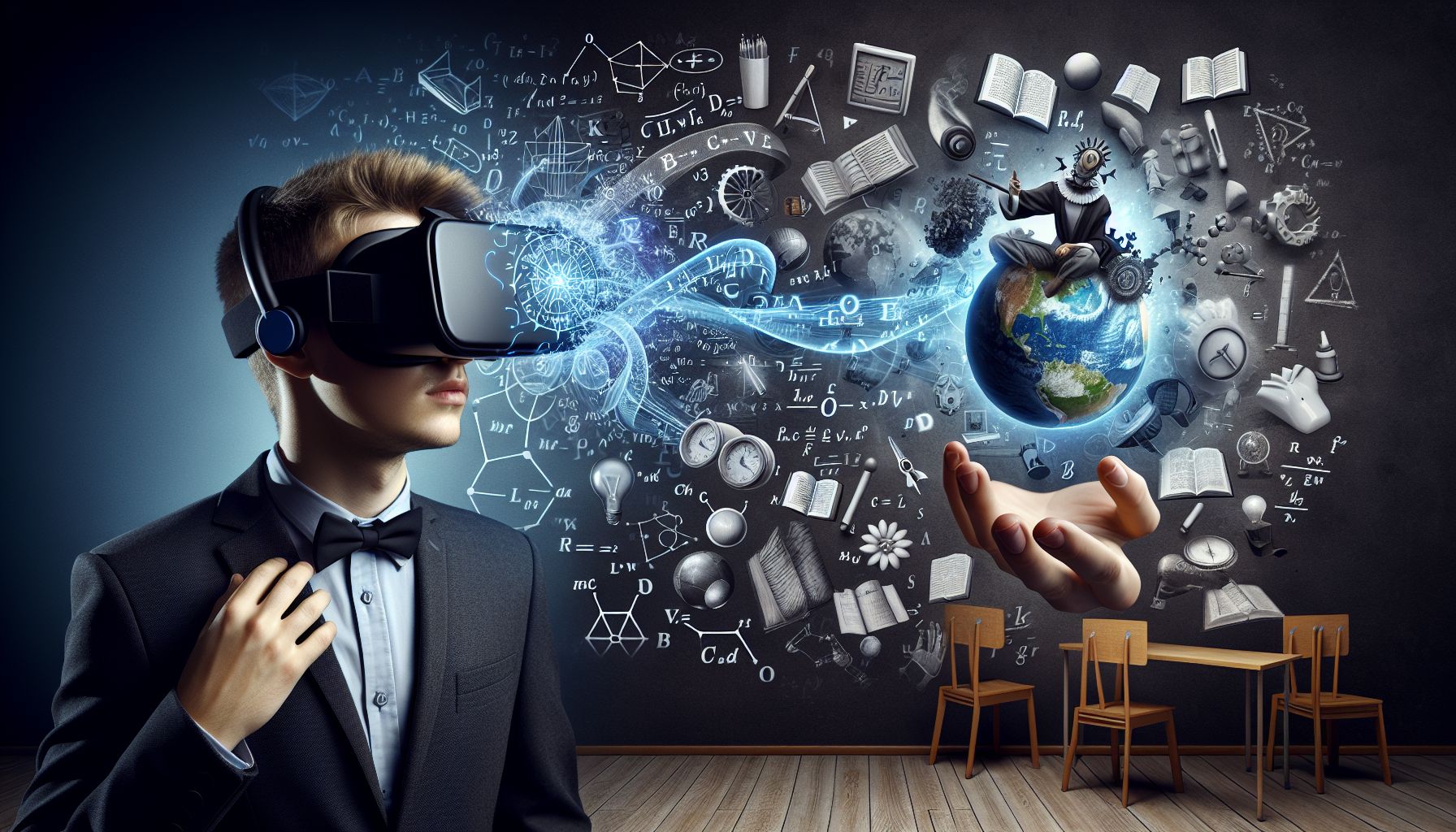📌 Let’s explore the topic in depth and see what insights we can uncover.
⚡ “Imagine sitting in a regular classroom and suddenly finding yourself swimming with dolphins in the deep ocean or walking on the moon. Welcome to the transformative world of virtual reality in education, where immersive learning has no bounds!”
In the realm of science fiction, the concept of virtual reality (VR) has always fascinated us. The idea of immersing ourselves in a digitally created world, interacting with virtual entities, and experiencing something entirely different from our physical surroundings was a dream that seemed far-fetched. But today, with the advancement of technology, this dream has turned into a remarkable reality. And it’s not just about playing video games or watching 3D movies anymore. VR has started to pervade various sectors, including education, and it’s here to revolutionize the way we learn. The integration of VR in education is not just about making learning fun. It’s about enhancing the comprehension of complex concepts, making lessons more interactive, and fostering a deep understanding among students through practical learning. This blog post aims to unmask the potential of VR in education, demonstrating how this technology can be a game-changer in the learning process.
🎓 VR and Education: A Perfect Blend

"Virtual Reality: Unveiling the Future of Education"
The traditional classroom setting has its fair share of challenges. For students, it can often be difficult to grasp complex and abstract concepts simply by reading from textbooks or listening to lectures. Here’s where VR steps in, transforming abstract ideas into tangible experiences. Imagine learning about the solar system by virtually visiting each planet, or understanding human anatomy by interacting with a 3D model of the human body. Sounds fascinating, doesn’t it? That’s the power of VR in education. It provides an immersive learning environment, making education more interactive, engaging, and fun.
🚀 Unleashing the Learning Potential with VR
There’s no doubt that VR in education is a powerful tool. Let’s dive deeper into the ways VR can boost learning potential:
Interactive Lessons
With VR, students can interact with 3D models, manipulate them, and even walk around them. This makes learning not just passive reading or listening, but an active, engaging process.
Immersive Learning
VR creates an immersive learning environment where students can virtually visit historical sites, explore geographical locations, or even travel to outer space. This immersive experience enhances understanding and retention.
Safe Learning Environment
VR provides a safe learning environment where students can perform experiments, learn to drive, or practice surgical procedures without any real-world risks.
Learning through Experience
Research suggests that experiential learning significantly improves comprehension and retention. With VR, students can learn by doing, thereby resulting in better understanding and recall.
🧪 Case Studies: VR in Action in Education
There’s nothing like real-world examples to truly understand the impact of VR in education. Let’s explore some intriguing case studies:
Biology Lessons at San Francisco High School
San Francisco’s Balboa High School introduced VR to help students learn about the human body. Students could explore the human circulatory system, walk through the heart, and even watch red blood cells in action. This VR experience made biology lessons much more engaging and comprehensible.
History Lessons at Clevedon School in the UK
At Clevedon School in the UK, students used VR to virtually visit Anne Frank’s house while studying World War II. This immersive experience provided them with a deeper understanding of the historical context, making the history lesson more real and tangible. 🧩 As for These, they’re just a few examples of how VR is enriching the learning experience. As VR technology continues to develop, the possibilities for its application in education are virtually endless.
🛠️ Implementing VR in Education: Tips and Tricks
While the benefits of VR in education are enormous, implementing it can be challenging. Here are some tips to make the process smoother:
Choose the Right VR Content
📎 You’ll find that numerous VR educational apps available. Choose the ones that align with your curriculum and learning objectives.
Provide Training
Ensure that both teachers and students are comfortable using VR technology. Provide adequate training and support.
Ensure Safety
While VR is generally safe, it’s essential to ensure that students are using it correctly. For instance, make sure they take regular breaks to avoid VR-induced motion sickness.
Blend with Traditional Teaching
VR should not replace traditional teaching methods but complement them. Blend VR with conventional teaching for a holistic learning experience.
🧭 Conclusion
The education sector is always in search of innovative tools and techniques to enhance learning, and Virtual Reality appears to be an answer to that quest. With its ability to turn abstract concepts into interactive, immersive experiences, VR has the potential to transform the way we learn. However, the integration of VR into education is only in its early stages. As we continue to explore this exciting technology, it’s crucial that we approach it thoughtfully, ensuring that it serves to enhance learning rather than distract from it. The future of VR in education is bright, and as educators and learners, it’s an adventure we should all be excited to embark on. In the end, as the famous American educator John Dewey said, “If we teach today’s students as we taught yesterday’s, we rob them of tomorrow.” VR in education is about preparing our students for tomorrow, equipping them with knowledge and skills that will help them thrive in the fast-paced, technologically driven world of the future. So, let’s embrace VR and make learning an adventurous journey rather than a mundane task!
🌐 Thanks for reading — more tech trends coming soon!
